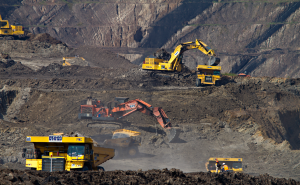
Question: How important is the integrity of a tailings dam to the successful operation of a mine?
Answer: Very important.
 Tailings dam stability is so important that in some jurisdictions regulators may be requiring that mining companies have third party independent review boards or third party audits done on their tailings dams. The feeling is that, although a reputable consultant may be doing the dam design, there is still a need for some outside oversight.
Tailings dam stability is so important that in some jurisdictions regulators may be requiring that mining companies have third party independent review boards or third party audits done on their tailings dams. The feeling is that, although a reputable consultant may be doing the dam design, there is still a need for some outside oversight.
Differences in interpretation, experience, or errors of omission are a possibility regardless of who does the design. Hence a second set of eyes can be beneficial.
Is the resource estimate important?
Next question is how important is the integrity of the resource and reserve estimate to the successful operation of a mine?
Answer: Very important. The mine life, project economics, and shareholder value all rely on it. So why aren’t a second set of eyes or third party audits very common?
NI 43-101 was the first step
In the years prior to 43-101, junior mining companies could produce their own resource estimates and disclose the results publicly. With the advent of NI 43-101, a second set of eyes was introduced whereby an independent QP could review the company’s internal resource and/or prepare their own estimate. Now the QP ultimately takes legal responsible for the estimate.
 Nowadays most small companies do not develop their own in-house resource estimates. The task is generally awarded to an independent QP.
Nowadays most small companies do not develop their own in-house resource estimates. The task is generally awarded to an independent QP.
Resource estimation is a special skill
Possibly companies don’t prepare their own resource estimates due to the specialization needed in modelling and geostatistics. Maybe its due to the skills needed to operate block modeling software. Maybe the companies feel that doing their own internal resource estimate is a waste of time since an independent QP will be doing the work anyway.
The QP is the final answer..or is it?
Currently it seems the project resource estimate is prepared solely by the QP or a team of QP’s. In most cases this resource gets published without any other oversight. In other words no second set of eyes has taken a look at it. We assume the QP is a qualified expert, their judgement is without question, and their work is error free.

As we have seen, some resources estimates have been mishandled and disciplinary actions have been taken against QP’s. The conclusion is that not all QP’s are perfect.
Just because someone meets the requirements to be a Competent Person or a Qualified Person does not automatically mean they are competent or qualified. Geological modeling is not an exact science and will be based on their personal experience.
What is good practice?


 One downside to a third party review is the added cost to the owner.
One downside to a third party review is the added cost to the owner.
I have mixed feelings on this question. I’ve seen a lot of crap out there and wonder why more people aren’t hauled up in front of a disciplinary board to defend their poo. I’ve learned over time to be wary of reports prepared by certain consulting companies and to be more accepting of those companies that I’ve seen do consistently good work in the past. But even with the latter group I was surprised and disappointed recently with the company that published the Rubicon PEA, who I have considered in the past to be one of the best groups at good resource estimation. (I was also surprised by the directors…two of whom I know fairly well as good mining people who should never have let this get past them.) Interestingly, Rubicon went back to the same company for their most recent update, so I guess they still have confidence in their consultant.
Then there is the Pretium case where one reputable consultant walked away from the deposit and essentially said there was no resource there, but another one (reputable one) persisted and validated the resource grades with a bulk mining sample. They’re now building the mine, and only time will tell if this is another Rubicon, but so far it all appears to be as predicted by the second consultant.
Someone has to be held accountable in the end when a deposit turns sour because of the model. If I were the QP I would probably welcome a review prior to publication as long as it focuses on process rather than content.
I have acted as the “second pair of eyes” in the past, having to produce only a model, resource and a memo-style report as per the client request. I have also been in the situation where I had to pass my data to the “second pair of eyes”.
I think it is good practice. The cost of a review is still minuscule compared to mine development. Of course people might differ on say modelling techniques, confidence limits, interpolation techniques, variography etc – as long as there is broad agreement about the outcome.